The Horror and Romance of Rural Higurashi
by ZeroReq011,The rural village setting is a staple of many works of horror. Many horror stories see rural settings as sites suspect, estranged from rational civilization, operating under odd reason. Outsiders passing through or settling in the countryside find themselves uncomfortably out-of-place, with everything around them discomfitingly alien. And yet, the rural village setting also happens to be a staple of literary modernism. Many modernist stories characterize city living as a melancholic livelihood, doomed to numbing transaction, and detached from human connection. Outsiders musing about or moving into the countryside desire welcoming communities and tighter relationships, but what they think of as a dream come true can just as often turn into a trap. The rural village becomes especially nightmarish when these assumptions merge together and then twist apart. Nostalgic warmth unravels into fanatic hysteria. Villagers turn on outsiders and then themselves. "Resting your bones" becomes a double entendre.
The Higurashi series explores the perpetually latent horror at this village fork of dream and nightmare, and it does so by basing its story setting of Hinamizawa on a small Japanese village I had the opportunity to stay at: Shirakawa.
Tradition and the Village of Shirakawa
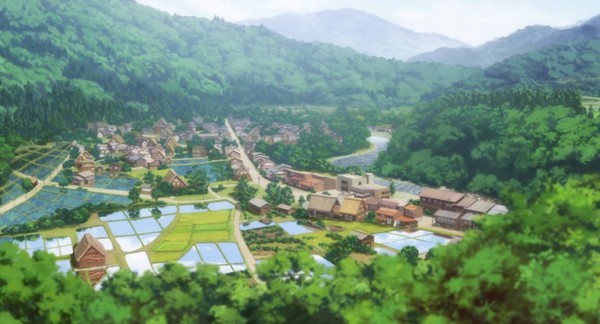
Shirakawa is located in Gifu Prefecture, a landlocked administrative division in central Japan east of Tokyo and north of Osaka. While the area comprising modern Gifu enjoyed significant foot traffic and endured large-scale samurai battles – the country's crossroads between East and West – the mountain settlements known as today's Shirakawa remained tiny in size, and their inhabitants kept mostly to themselves. Shirakawa is remote – so much so that it's thought as one of the few locales in Japan where warrior households on the losing end of a factional struggle retired to in order to evade their archenemies-turned-authorities. For instance, after losing in the Genpei War against their Minamoto rivals – who would later go on to found Japan's first shogunate – the survivors of the Taira clan were reported to have fled to hard-to-reach places such as the Shirakawa area for refuge.
The inhabitants of Shirakawa developed aspects of culture that were able to largely resist assimilative pressures from the outside and which later become iconically unique once they were "rediscovered". A similar dynamic to this cultural divergence of one area from the rest of a country can be found in America: the remote Appalachian peoples of West Virginia refused to join the rest of Virginia in its secession from the Union during the American Civil War (becoming its own state in the process) and struggled up until the 20th century linking its geographically isolated communities to the US's national transportation network. A unique form of English dialect called Appalachian English evolved over time in places like the remote parts of West Virginia, similar to how the unique form of farmhouse architecture called gassho-zukuri developed in the Shirakawa area.
Shirakawa is most famous for its special gassho-zukuri architecture. In addition to subsistence agriculture and niter (gunpowder) production, the area's villagers are also heavily involved in sericulture (silk) production. Shirakawa experiences a lot of snowfall, and the double dilemmas of how to deal with heavy snows and produce more silk led to the distinctive designs of gassho-zukuri. The gassho-zukuri farmhouse has a solidly built slanted roof designed to withstand and slough off accumulating snow; it's also built long and tall to allow for generous attic space for farm storage and sericulture. Coincidentally, the design resembles hands folded together in religious prayer, leading to its gassho (合掌) name. Covering gassho-zukuri roofs are thick reedy thatches that require periodic replacement. Being too much for one household to do by itself, thatch replacement has traditionally been a task the village community comes together to do, a tradition that promotes the kind of intimate cooperative solidarity rural villages are known for.





I stayed in Shirakawa for about a week, and I was impressed by a few things whilst walking around the village's iconic gassho-zukuri, geeking over my pilgrimage of history and Higurashi. Life in small, rural villages can be precarious, especially back in the day. Villagers cooperating with each other out of practicality – then kinship and later tradition – promotes communal bonding and flourishing. This can be observed in the Shirakawa area with the communal gassho-zukuri roof rethatching as well as food traditions in Ainu culture such as the communal preparation of citatap. However, this dynamic also tends to create an in-group that might not be altogether welcome to outsiders – a dynamic that's examined to horrific effect in Higurashi.

As post-WWII Japan underwent rapid urbanization and stagnating population growth, the Shirakawa area fell into poverty and disrepair as its youth, like others from similar locales, left their rural villages for the excitement and opportunities of the cities. These problems would end up being addressed with a concerted tourist campaign of "rediscovery" by the rest of the country and the world, culminating in its UNESCO World Heritage Site designation. On the one hand, Shirakawa's culturally important designation brought much-needed yen to its residents to restore and maintain many of its traditional structures and customs. On the other, the visitors that brought this yen to Shirakawa would also bring other changes that the residents may be far more ambivalent about adopting and tolerating. Locally-treasured cultural artifacts increasingly become commodities for (sometimes rude) outsiders to gawk at and litter around, and the village ironically abandons more of its traditional ways of living as it gears its local economy towards making more tourist cash.
And still, Shirakawa's population grays and shrinks by the day.
Religion and the Village of Hinzamizawa


The central challenge that rural villages like Shirakawa face, the balancing act between managing the delicate tensions of the in-group vis-a-vis out-group and the pressing need to welcome outsiders to help revitalize declining communities, is one of the major themes that Higurashi's Shirakawa stand-in, Hinamizawa, addresses. In one respect, it tackles it through religious faith. I've been to the Shirakawa Hachiman Shinto shrine that Higurashi used as the visual basis for Hinamizawa's Furude Shrine. It's at this shrine, with one exception, where Higurashi pilgrims have left their most visible mark; its hanging ema feature many drawn pictures of the Higurashi girls plus actual pictures of girls in Higurashi cosplay. Especially in countryside locales back in the day, houses of worship often served as the center of rural village life and organization – the social squares where farmers pray for bountiful harvests and good vibe festivals. Interestingly though, the religious elements of Higurashi function less according to the worship of a longtime mainstream Japanese deity like Hachiman and more the deities of niche Japanese new religions like Konjin.
Konjin of the Japanese new religion Konko-kyo and Oyashiro of the local faith of Hinamizawa are both deities with historically infamous and arguably misunderstood reputations for being malicious harbingers of misfortune. Some Japanese have historically attributed otherwise extremely bad luck to somehow angering Konjin; similarly, many of Hinamizawa's inhabitants believe that extremely bad things happen to those in the village who violate the will of Oyashiro. In Higurashi, some of the lesser-known tools of Oyashiro worship are literal torture devices, some of the rituals practiced in Oyashiro worship can be eerily indistinguishable from very graphic violence, and people turning up dead or missing are explained as a natural consequence for making Oyashiro mad. The founder of Konko-kyo sought to reframe Konjin as not a vengeful god but a good one that actively wants to see others better off; likewise, the current Oyashiro head priestess Rika Furude insists that Oyashiro has always meant well and that the god's current image is a result of incomplete information and mistaken attributions.
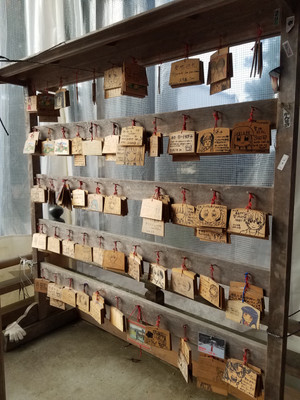


And yet, religion has long been stained as a catalyst for radicalized violence or a tool of oppression. Religion's existing reputation for fanaticism-driven terror goes hand-in-hand with horror stories about crazy religious cults in rural villages engaging in barbaric practices, wherein cult leaders assuage the whims of cruel gods or encourage the next coming apocalypse whilst conveniently exercising oppressive control over the communities within these cults' grasps. As demonstrated by the case of Aum Shinrikyo, Japan is no stranger to religious cults that use violence liberally, and Oyashiro worship has pretty ominous prescriptions/proscriptions on behaviors such as how Hinamizawa's villagers should never ever leave.
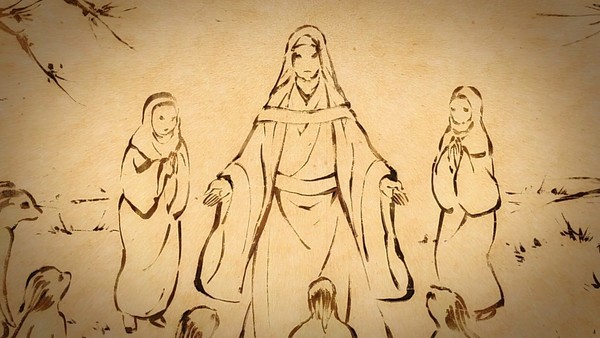

It doesn't help that two-thirds of the leading Hinamizawa families (Furude and Sonozaki) possess literal torture devices related to Oyashiro that outsiders like Keiichi Maebara are understandably perturbed by. Keiichi, who recently moved to the village from the city, hears about the village murders, learns about the village's worship of Oyashiro, and listens to speculation about how the murders are tied to a curse of Oyashiro. He has one friend whose reverence to Oyashiro is bordering on obsession, and two others from some locally famous families (Furude and Sonozaki) that choose not to be upfront with him about the Oyashiro curse or the village murders. He sees all the torture devices in the storehouse of a shrine dedicated to Oyashiro, and, well…
The Horror and Romance of Rural Higurashi
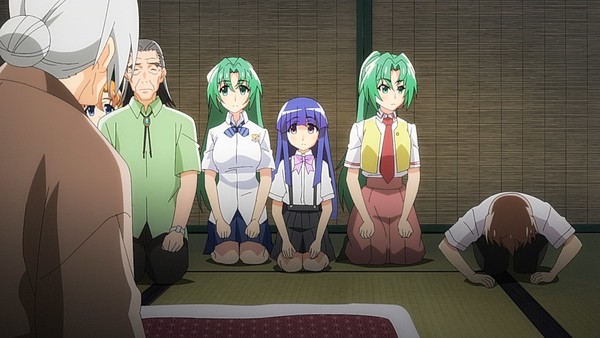
…you can see how someone like Keiichi might start feeling paranoid about his friends and the village. The breakdown in trust between Keiichi and his friend group in Higurashi is a precursor to the larger breakdown in relationships in the once tight-knit Hinamizawa. Keiichi, the most obvious outsider, feels persecuted by the in-group of the rural village, now unrecognizable from the place he saw as a refuge from his problems with connection back in his city life. Keiichi, however, isn't the only person in the village that feels mistreated, as many of Keiichi's other friends also suffer perceived and real ostracization by the village in-group.
Satoko Hojo, Shion Sonozaki, and Rena Ryugu either have ties to the leading families of Hinamizawa, or otherwise lash out quite violently against the village once their persecution complexes are set up, and given the powder keg that is Hinamizawa's situation, how their disaffections are handled has a direct impact on the village's survival. Can these children be convinced that the village is not their enemy, and can the village support these kids with the same solidarity it was once famous for? Protecting and raising these children well not only prevents the village's immediate destruction from their own hands or others, but also breathes life into the village's continued future as these are the village's next generation.
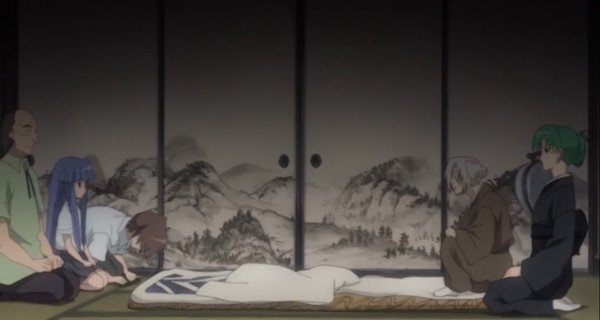
Nature dictates that the newer generation replaces the old, and successive generations will always be at least a little different from current ones because of the different environments each are brought up in. Between maintaining a status quo that defines the village's current identity that the older generations hold so dearly and welcoming major changes that better answer the newer generations' needs so that they want to stay, Higurashi declares through blood, sweat, and tears that rural villages like Hinamizawa must compromise with change.
Keiichi especially stands as the keystone of this thematic conflict. He's a member of the newer generation who isn't even originally from the village, yet he still made friends with the village's children. He grew to admire and love the village for its once-famed solidarity and tight-knit community, and is willing to actively participate and invest in the village's future. If Hinamizawa rejects him and what he stands for symbolically – as a new face to a community that can't hope to sustain itself without fresh blood – then the village is ultimately doomed to either a quick violent death or a slow, drawn-out one.
The Horror, Romance, and Promise of Rural Life


That is the conflict-turned-horror that Keiichi and friends and the village as a whole must overcome; less severely, it is also the challenge rural villages like Shirakawa and others must tackle: welcoming and adjusting to change. Granted, in real-life, it's probably unlikely that all these villages in the Japanese countryside will continue to exist forever. As fixed up and cash-rich as Shirakawa has become lately from its steady stream of tourists (Higurashi fans included), its population is still greying and shrinking, if at a slower rate than prior. But letting in more fresh blood and modern influences doesn't have to and really shouldn't mean that rural villages must unconditionally surrender all their local culture to the assimilative mainstream.
Many folks from the city visit Shirakawa because they want to be charmed by the sights of the gassho-zukuri, the communal re-thatching rituals, the iconic Higurashi-Shirakawa valley view, and the romanticized atmosphere of a tight-knit community. Sure, this desire of city dwellers for rural village charm might simply be a casual nostalgia or short fad that they'll soon sideline or forget once they return to their urban routines. But based on the respective cult and mainstream popularity of nostalgic countryside settings in anime like Higurashi and Sakura Quest, My Neighbor Totoro and Only Yesterday, aspects of rural life still have their essential and lasting value in people's eyes. And in a non-scary sense, if that earnest wish for well-rested bones leads to some city folks packing their belongings for the countryside, then the countryside will be able to survive to be appreciated for longer.
Social Scientist & History Buff. Dabbles in Creative Writing & Anime Criticism. Consider following him at @ZeroReq011
discuss this in the forum (7 posts) |
this article has been modified since it was originally posted; see change history